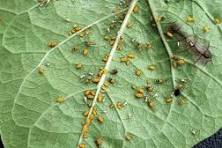Title: The Grass Is Greener at the Right Height: Mowing Tips for Sarasota & Manatee Lawns
By Westfall’s Lawn and Pest Control
Here in Sarasota and Manatee counties, we know a thing or two about sunshine, salty breezes, and lush green lawns. But even in paradise, keeping your grass healthy takes more than regular watering and a prayer to the rain gods it takes mowing at the right height.
Surprised? You’re not alone. Mowing height is one of the most overlooked aspects of lawn care, yet it plays a huge role in your lawn’s health, appearance, and even its ability to fend off pests and disease.
At Westfall’s Lawn and Pest Control, we’ve seen our fair share of scorched lawns and stressed-out grass blades, many of which could’ve been avoided with a few simple height adjustments. So before you fire up that mower this weekend, let’s talk about why your blade height could make or break your lawn.
One Size Doesn’t Fit All
Different types of grass have different needs. In our region, the most common turf types include St. Augustine grass, Zoysiagrass, and Bahia grass. Each has a “happy zone” when it comes to mowing height:
St. Augustine grass: 3.5 to 4 inches
Zoysiagrass: 1.5 to 2.5 inches
Bahia grass: 3 to 4 inches
Mowing below the recommended height can shock the grass, weaken the root system, and make your lawn vulnerable to weeds, chinch bugs, and fungus. On the flip side, mowing too high can leave your lawn looking shaggy and may lead to thatch buildup.
Why Mowing Height Matters
1. Stronger Roots
Grass roots grow to match the height of the blade. Taller grass = deeper roots. Deeper roots = better drought resistance and nutrient absorption. It’s that simple. Shave your grass too short and you’re encouraging weak, shallow roots that can’t handle the Florida summer heat.
2. Better Weed Control
A properly mowed lawn shades the soil, making it harder for weed seeds to germinate. Think of taller grass as natural weed control—no chemicals required.
3. Disease Defense
Cutting your grass too short creates open wounds on each blade, leaving your lawn vulnerable to disease. Longer blades recover faster and are better equipped to fend off fungal infections, especially in our humid coastal climate.
4. Pest Resistance
Stressed grass is an open invitation to pests. Healthy, well-maintained lawns are better at resisting damage from insects like sod webworms, chinch bugs, and grubs. Trust us—we’ve seen what happens when they take over.
The “One-Third Rule”
Here’s a lawn care golden rule: never remove more than one-third of the grass blade in a single mow. Cutting too much at once shocks the plant and can lead to brown patches, especially in the summer months. If your lawn’s gotten a little wild, mow it down gradually over several days rather than scalping it in one go.
Pro Tip: Keep Those Blades Sharp
A dull mower blade tears the grass rather than slicing it cleanly. Torn blades turn brown at the tips and make your whole lawn look patchy. Plus, ragged cuts heal slower and increase vulnerability to disease. Sharpen your mower blade every 20–25 hours of use—or better yet, let a professional handle it.
Let Westfall’s Help You Stay a Cut Above
At Westfall’s Lawn and Pest Control, we know that healthy lawns don’t happen by accident—they happen by design. From expert mowing tips to pest prevention and fertilization plans tailored for Sarasota and Manatee counties, we’re here to help your lawn thrive year-round.
Whether you’re maintaining a pristine patch of St. Augustine grass or trying to revive a sun-scorched Zoysia lawn, the right mowing height is a game-changer.
So the next time you're tempted to set your mower to “buzz cut,” remember: taller grass is happier grass. And a happy lawn is a healthy, pest-resistant lawn.
Need help getting your lawn in shape?
Give Westfall’s a call we’ll take care of the height, health, and everything in between.


